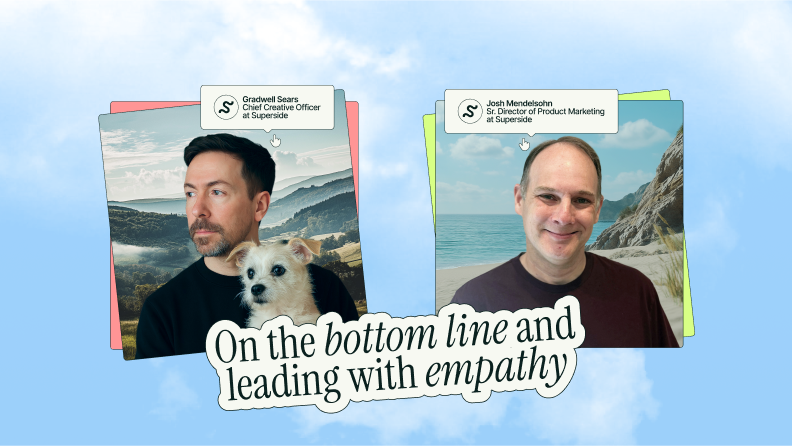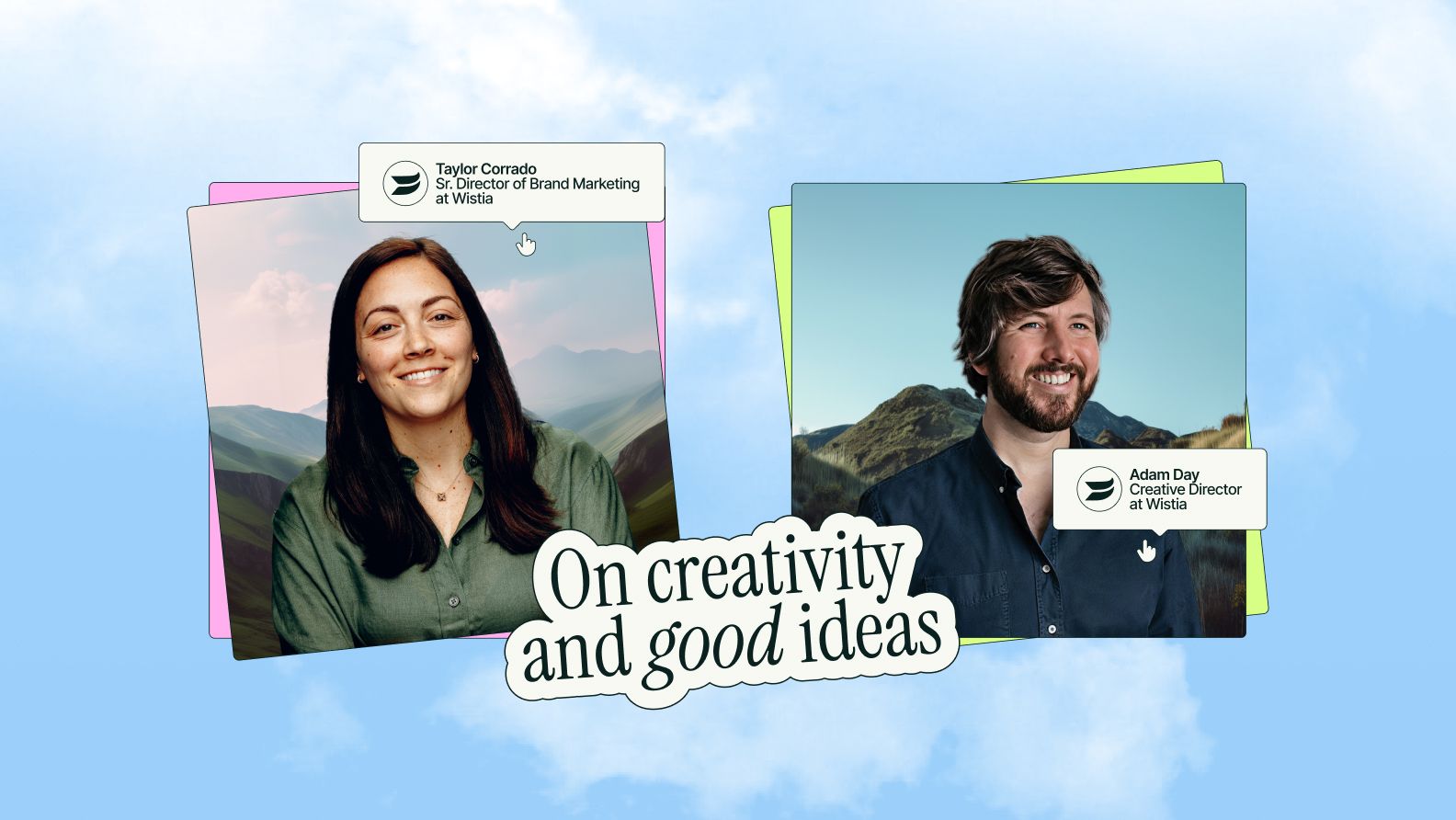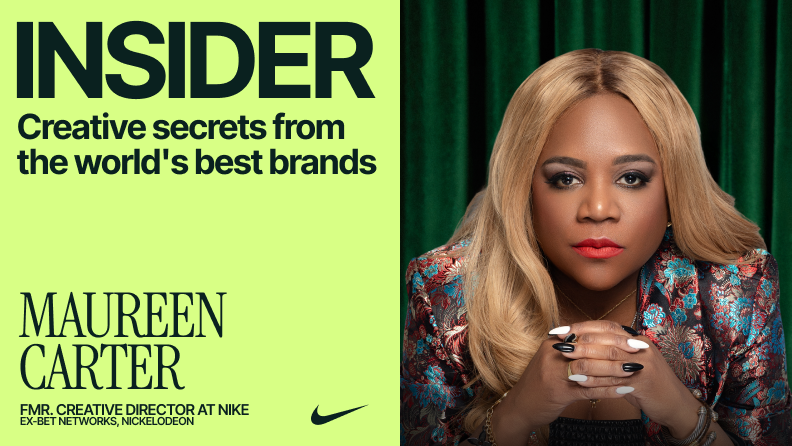Insourcing vs. Outsourcing Design: A Creative Decision-Making Guide

To the weary-eyed, tired and burnt-out creatives—we hear you.
You're juggling jobs when you'd rather focus on the results-driven work and be a leader in your organization.
You're not alone.
Design leaders around the world are responding to the rapidly changing demands of the digital era—when the customer's platform of choice shifts, it changes the way we reach them.
Leadership wants you to think and move faster with your existing resources—building steam with a grain of salt. And, it's pushed the development of remarkable decision-making frameworks like VUCA, Six Sigma, and Kaizen, a Japanese term meaning continuous improvement.
"Just ship it."
“Create and iterate."
“Learn and evolve."
These minimum viable products help us test the waters to know if we'll sink or swim, but too many tests and we're barely dipping our toes in the water let alone know if our boat'll float. You can't hedge your bets in the current market, hoping one will pay off. You need to make a smart bet and go all in on one idea while keeping the engine of what does work humming.
How do you do that?
Outsourcing. It's no longer a dirty word. It's a less risky way to hire people, it simplifies accounting, you can access high-quality talent at a lower cost (especially for businesses in hot real estate markets), and it removes the emotional ties when your business needs to scale up or down.
According to the Creative Management Report, nearly 86% of in-house teams are using external partners, and another third plan to increase the amount of work they outsource.
Spinning plates don’t have to be table stakes. It's more about knowing what needs insourcing vs. outsourcing. Ask yourself: What are the in-house team's capabilities, what would you like to add, and what can you outsource?
In-house teams are making these decisions. They're in charge of managing their creative resources, including external partners.
All. These. Decisions.
Psychologists say adults make 35,000 decisions a day. While most are mundane, many set off a process that will define our days, months, and years to come—especially when it comes to design.
But not all creative decisions or projects require investment or involvement of the C-suites. There are many creative business decisions made every day that have little to do with the bottom line.
To solve this, you need a creative decision-making model that nearly automates design—a system to make quick decisions on how the work gets done. Without one, you'll spend more time deciding than actually doing the work.
Fortunately, Dmitry Shamis, Founder of The Creative Brand, built a system to establish how his team evaluates work because when everything is a priority, nothing is a priority. To appease all groups, rather than take on everything, he developed the Creative 2x2 matrix.
(Source: The Creative Brand)
The axes of the Creative Decision Matrix are
- Outsourced vs. internal. What work can you outsource to approved vendors (e.g., freelancers, contractors) or agencies vs. what work needs to stay in-house?
- Creative-driven vs. creative-supported. What work can others do with support from the creative team vs. what work needs to be done by the creative team?
The goal was to free up 75% of his team's workload.
75%
That doesn't mean his team sits around 75% of the time. It means his team spends 100% of their time on the most impactful projects.
That 75% of the design work is repeatable, template-able, and process-driven. Shamis and his team spent years creating and developing playbooks for the redundant. It's now more efficient to run these playbooks through outsourcing or making them self-serve—allowing him to take on new challenges, develop needed playbooks, and grow his career.
What to Outsource: The 6Ts of Delegation
While we know the benefits of delegation (building teams to share the workload, enabling you to do your best), in practice, we hoard the work and hold on to our irrational fears like "the quality will be poor," "it will take me more time to assign than do it myself," or “it costs too much."
Jenny Blake, author of Free Time: Lose the Busywork, Love your Business" who spent over five years at Google coaching managers on their personal growth and development, developed the 6T framework to help guide you on what to give away (what you're wasting your time with).
- Tiny. Think of tasks that don't take up much time but together add up. For example, ticking the Asana checkmarks. (We recommend DesignOps for this)
- Tedious. Simple, straightforward tasks that aren't the best use of your time. For example, cleaning up slide decks.
- Time-consuming. Important, somewhat complex tasks that only require your approval or for you to take it across the finish line. For example, iterations on ad creative.
- Teachable. Tasks that are at first complex, but can be operationalized, passed along, and given back to you for approval. For example, landing page design.
- Terrible at. Tasks that don't fit your strengths or where someone could deliver a much better asset. For example, video production is often outside a graphic designer's expertise.
- Time-sensitive. Tasks that need to be turned around in 24 hours or less, but you have priorities. For example, social media creative to hop on the latest trends.
Why Outsourcing Design is a Smart Bet
- Time and cost-savings. Time is a terrible thing to waste, especially when you have to focus on high-value projects. To keep it in-house, you spend time recruiting, paying a salary, buying tools, and helping them grow. Design talent has no borders, unlike lawyers or accountants, whose profession relies on local laws and regulations.
- Higher-quality. As you know, Graphic Designers come with different specializations. Your team is known for quality, so let's not give your illustrator a motion graphics project, which they could do, but hire a motion designer to hit the quality bar.
- Flexibility and scalability. Your business may need design support in its twice-annual busy seasons. You may want video production to test an idea. Your business is growing, so you're not 100% on what hires you need to make. Outsourcing gives you options. Companies are now leaning towards design outsourcing along with the product development outsourcing processes in general.
- Faster turnaround times. An employee is responding to Slack requests for the logo. An outsourced design partner knows their reputation is on the line with each project, and with a dedicated team, they can respond quickly to your requests.
- Easier budgeting. Eliminate promotions, overtime, and holiday pay; your costs are simplified and manageable.
Objections to the Creative Decision-making Model
Shamis spent years developing his model. It needed to be simple, easy to understand, and straightforward enough for anyone on his team to direct those outside the creative department to the appropriate resources.
Still, certain words and ideas don't sit well with creatives. Let's address those.
Templates aren't the most interesting problem to solve
Too often, top-end designers get caught up in the negativity associated with templates—they're like the data entry of the design world. Once in place, they’re helpful. You’ll wish you'd done it earlier. That work still holds value. Templates make it easier to execute for non-designers. The more you can remove redundancy, the more flexibility you have for deep creative work.
The need for quality control
True, everything needs to be good. However, not everything needs to be great. By offloading monotonous production work, you can focus on the high-quality of the most impactful work, ensuring that the work is great. Is it good enough to achieve the desired result (what the business needs the asset to do)? If time is imperative to the success of a project, sometimes good is enough.
The desire to keep it all in house
The hardest part of implementing the matrix is letting go. You can't solve for scale by holding on. When using the matrix, when another top-priority project comes flying in, you're not left scrambling. Rather than continuing to try and take on everything, which would be detrimental to your growth as a leader, you need to outsource.
Read: In-house vs. Agency
The Hidden Wins of a Creative Decision-making Process
By implementing the matrix, you'll free up your time and be able to focus on value-driven creative work.
Let's take a look at what else you gain.
The desire to attract and retain top creative talent
Attracting creative talent is difficult when assigning basic banners, thumbnails, and mindless production-oriented work. To reduce churn, you must build out the bottom half of the matrix and keep your new hires stimulated with big creative wins. You can also hire specifically for the bottom half, which requires a particular focus and talent. It would help if you had someone to find and manage your trusted contractors, freelancers, and vendors to get specific work done.
The capacity to reflect on decisions and evaluate them
A request may come in as "just f*ckin do it" (JFDI), so you rush to create and ship but never evaluate if it moved the needle. In our post on ways to give your design team more time, Danielle Giroux, Creative Director at Clio, spoke about implementing a Digital Asset Management tool. When she looked at the data from the DAM, she found 30,072 searches for the term "logo," or as she puts it, "30,072 Slack messages that didn't happen."
The path to personal and professional growth (for you and your team)
As a creative leader, you manage resources and can help people see where to spend their time and energy to avoid burnout.
With a systematic approach, you know what projects need additional support and whether they should be brought in-house or not.
For 3D vision, use a tool like Superside, where you can see what hours and capabilities you're using most in the platform. Pair that with your Customer Success Manager, and you can make smarter decisions on your next design hire, especially if you discover an ongoing need.
Designed to Climb with Smarter Creative Decisions
Shamis' Creative 2x2 Matrix helps Creative Directors make more intelligent decisions to grow their company. It works in lean times, and when you're busy, the system allows you to scale.
Consider this your planted seed.
Nothing happens overnight. You'll need to persuade the C-Suite to implement the matrix. Start by filling in the four quadrants—gather your approved vendors and agencies (or just Superside it all), and research DAM systems.
Soon you'll be back investing more time in creativity.
Tyler is a content marketer with a passion for writing, mental wealth, and fatherhood.
You may also like these

Results with heart: Inside Superside's empathy-fueled path to performance
Creative impact can’t be captured by a single metric or mood.But it is visible in results—and few understand this balance better than Superside's Gradwell Sears, Chief Creative Officer, and Josh Mendelsohn, Senior Director of Product Marketing. In our latest guide, Inside Great Creative Partnerships, Sears and Mendelsohn discussed how creative and marketing leaders must harmonize emotional resonance with measurable business performance to drive real impact.Spoiler: Results matter, but so do the people behind them. From ROI to vibes and empathy to partnerships that thrive, keep reading to see:Why creative is foundational to performance
Open doors, unlock ideas: Inside Wistia's creative partnership
An SNL-inspired twist on a classic campaign.An analogue book that’s shipped over 700 copies around the world.A TikTok series narrated by a psychic raccoon.Okay, that last one’s made up. But one thing’s for sure, the creative and marketing teams at Wistia don’t just bring the creativity—they crank it to eleven.That’s why we had to speak with them for Superside’s latest guide, Inside Great Creative Partnerships. Wistia’s Adam Day, Creative Director, and Taylor Corrado, Senior Director of Brand Marketing, were kind enough to oblige and spill their secrets, including:
Get off the conveyor belt: 22 leaders on the secret to great work
“It can’t be an assembly line. You have to bake in collaboration—brainstorms, thought starters—before your jump to production. That’s where the best ideas come from.”Kevin Branscum, Senior Director of Brand Marketing at Typeform, shared this thought when we interviewed him for our latest guide. And he wasn’t the only one. The concept of partnerships—true collaboration between marketers and creatives—came up over and over again as the lynchpin for any successful campaign.That’s why we called the guide, Inside Great Creative Partnerships.It digs into hard-earned, real-life lessons from 22 top creative and marketing leaders shipping great work, together. We’ve already spilled their number one secret. But there are many more big ones, like:The source of great ideas








